The botanical garden, which was established in the 19th century, is said to be the northernmost in the world. There is an underground heating system that allows a wide variety of plants that would otherwise not thrive at this latitude. I have been able to identify only a few of the ones pictured below. In some cases they had labels that I could take a picture of.
The "garden group" took a mini-van to the garden. We then spent an enjoyable afternoon prowling among the flowers and butterflies. We elected to walk back to the ship rather than wait for another mini-van. There were a surprising number of people going to & fro on the isolated road. By the time we finished our walk, we were staring to envy the groups of cyclists.
I'm going to indulge my love of flowers here and forego spreading them throughout the narrative (except for certain unique ones that I can't resist).
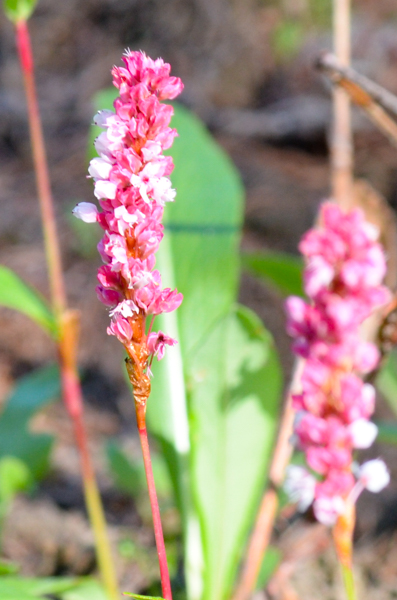
Best I can tell this is Polygonum bistorta, although there appears to be some taxonomic controversy over how it should be classified.
So much for those who say that botanical names are less confusing than the common ones.
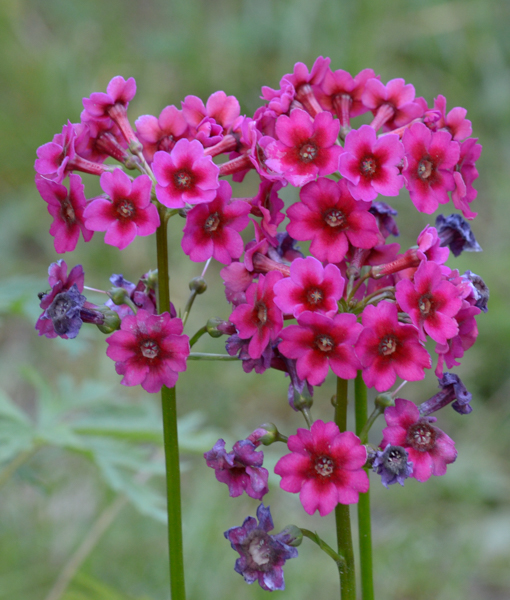 We saw a lot of these.
It might be one of the phlox family.
We saw a lot of these.
It might be one of the phlox family.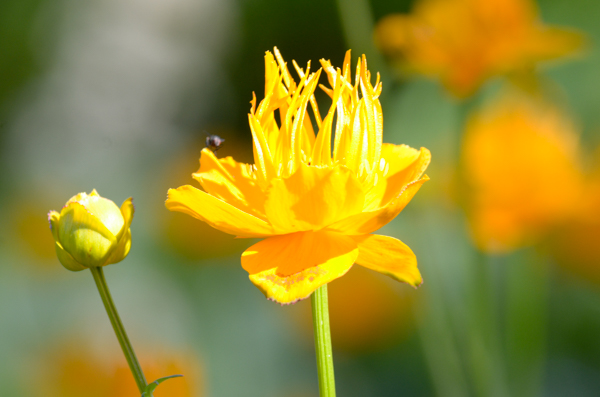 Trollius
chinensis, Chinese Globeflower, is available
in the US and my garden is calling it!
Trollius
chinensis, Chinese Globeflower, is available
in the US and my garden is calling it!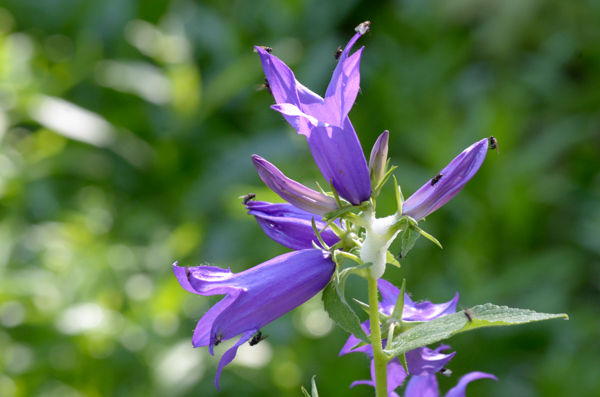 One
of many bell flowers.
One
of many bell flowers.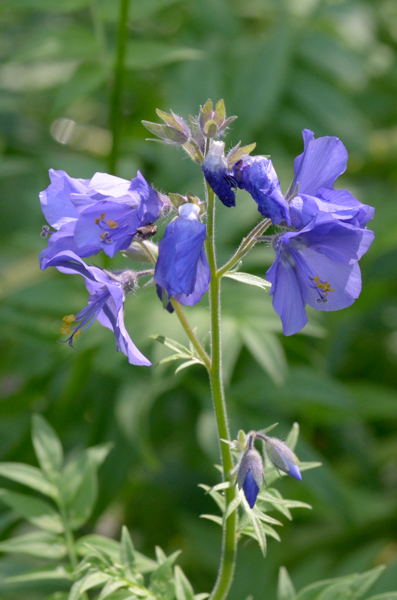
Poleminomium Viscosum has the inauspicious common name of skunkweed!
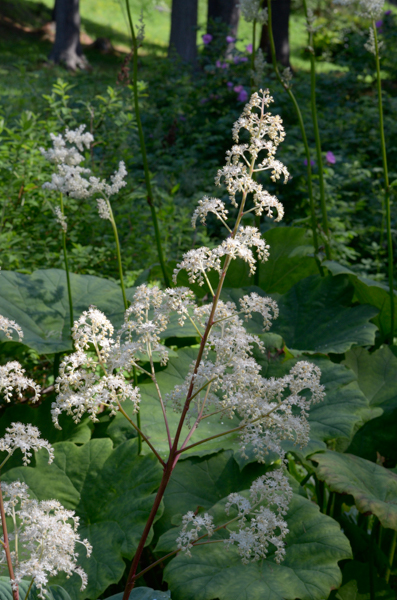
Astilbe.
They were very large throughout the Russian gardens we visited.
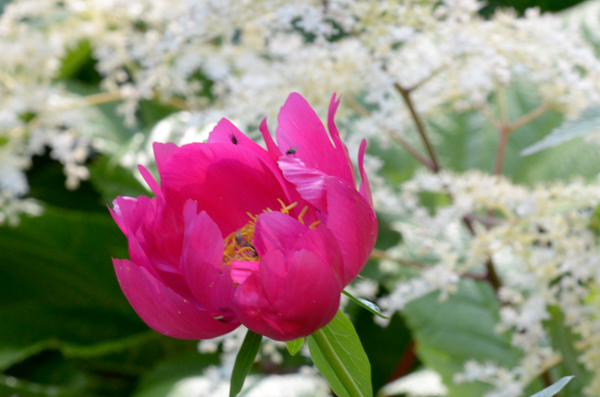
A peony blooming in July against a background of astilbe!
Either because of the micro-climates of the garden, or the northern latitude, there were summer flowers blooming alongside what we would call spring flowers.
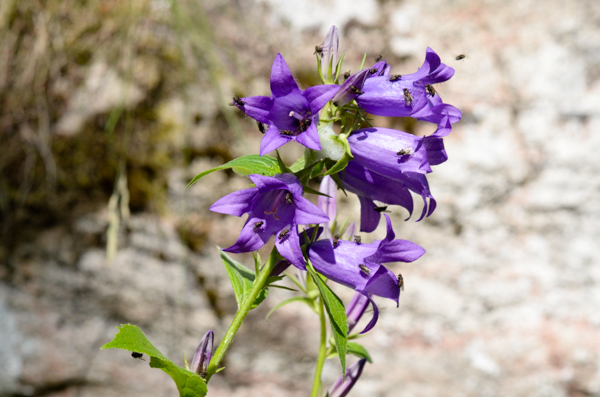
Probably some kind of campanula.
Flies appear to be the dominant pollinator. Most flowers were mobbed by them.
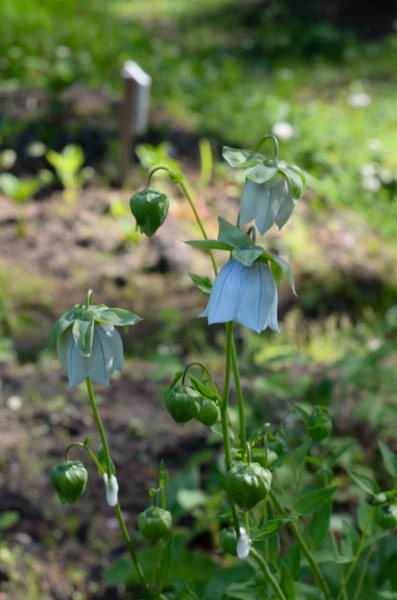 This
beauty had a striking dark interior. Couldn't figure out how to get
a good picture of it.
This
beauty had a striking dark interior. Couldn't figure out how to get
a good picture of it.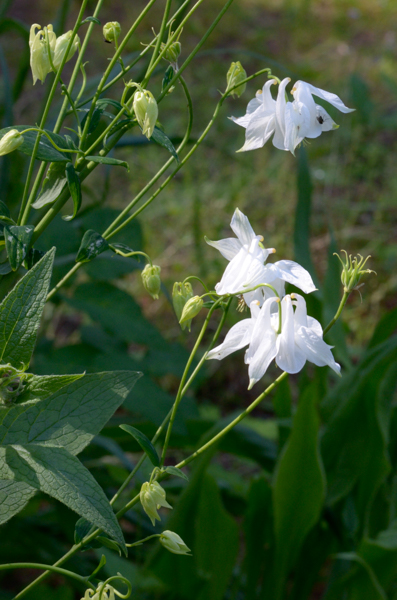
This looks like a form of columbine although the leaves are different.
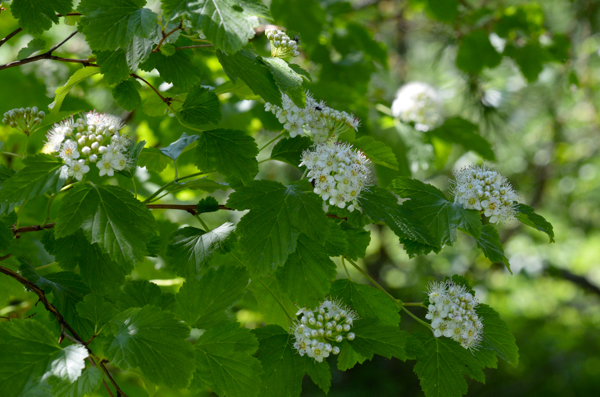
May be a viburnum.
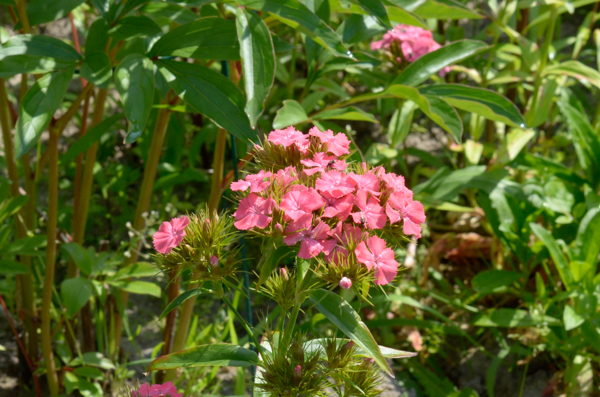 Phlox?
I liked the fringed petals.
Phlox?
I liked the fringed petals.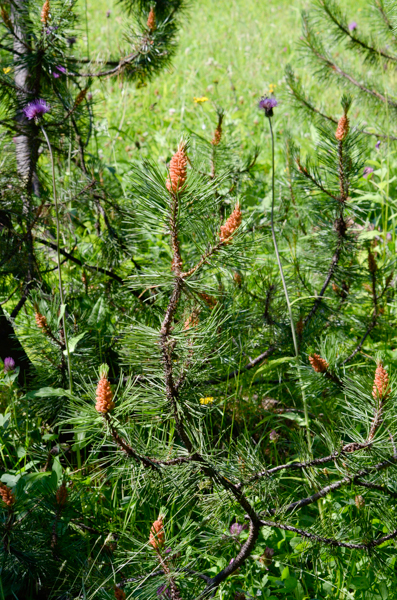
This was labeled as a mugo pine, but it doesn't look like any mugo pine I've encountered.
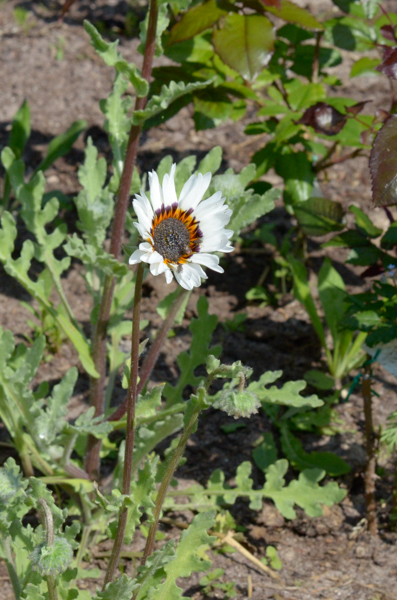 This
looks like some kind of blanket flower (Gaillardia), but the color is
wrong.
This
looks like some kind of blanket flower (Gaillardia), but the color is
wrong.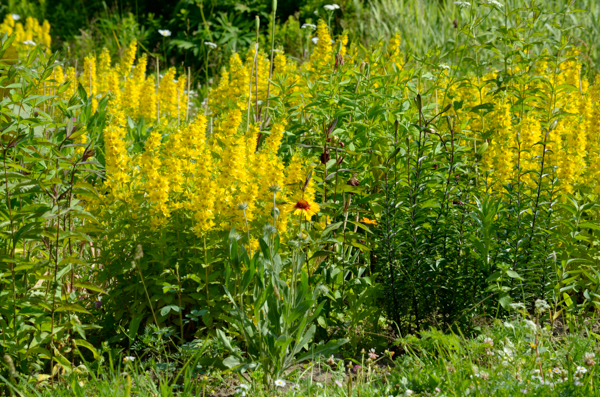 No
clue what they are, but the butterflies loved them!
No
clue what they are, but the butterflies loved them!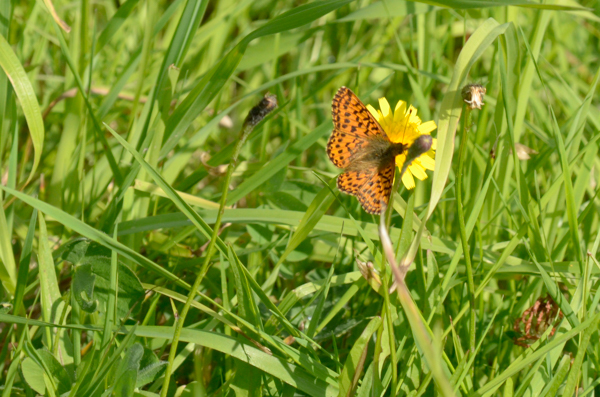 A
Fritillary butterfly of some sort.
A
Fritillary butterfly of some sort.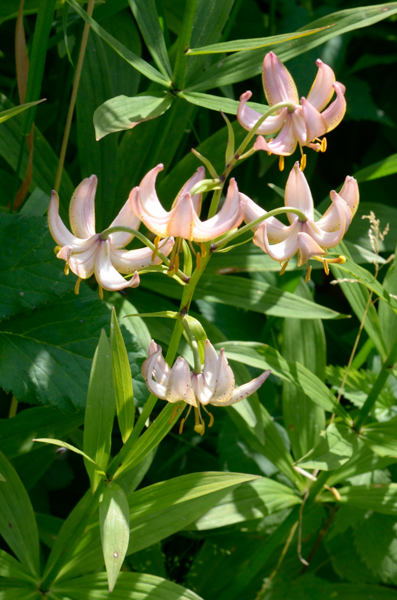
Whatever it is, it is very similar to a plant we saw at Inverewe Gardens in Scotland.
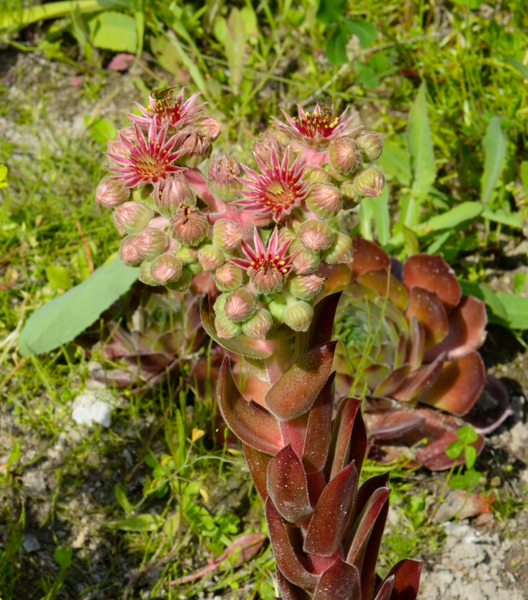 Looks
like a variety of Sempervivum (Hens & Chicks).
Looks
like a variety of Sempervivum (Hens & Chicks).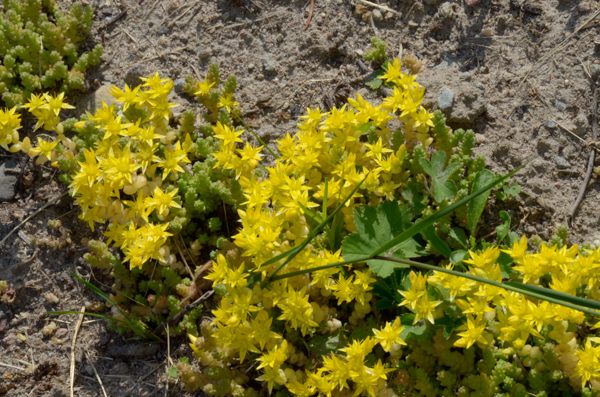 Appears
to be sedum acre, native to the Balkans and Asia Minor but
now widespread.
Appears
to be sedum acre, native to the Balkans and Asia Minor but
now widespread.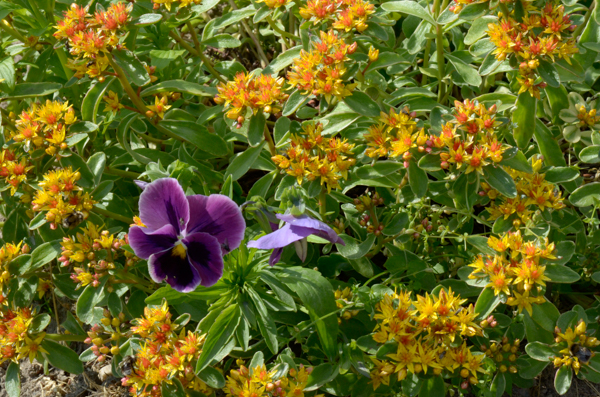 Pansy
and friends.
Pansy
and friends.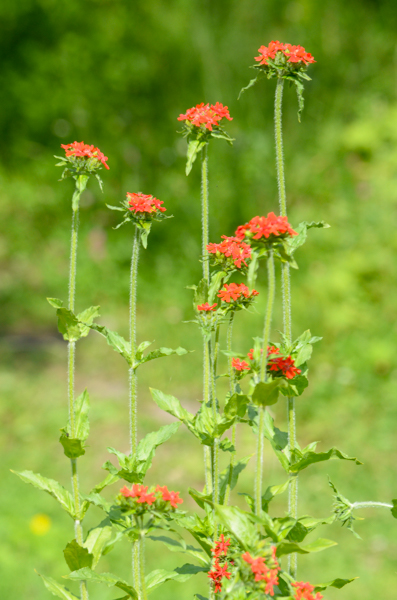
Don't know, but it was one of my favorites for its strong vertical habit.
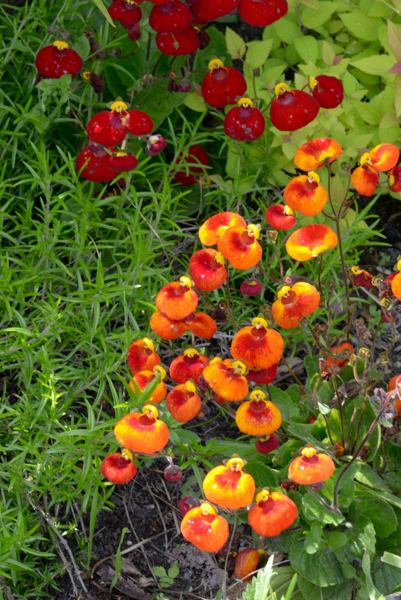 My
best guess is a kind of cypripedium or lady's slipper orchid.
My
best guess is a kind of cypripedium or lady's slipper orchid.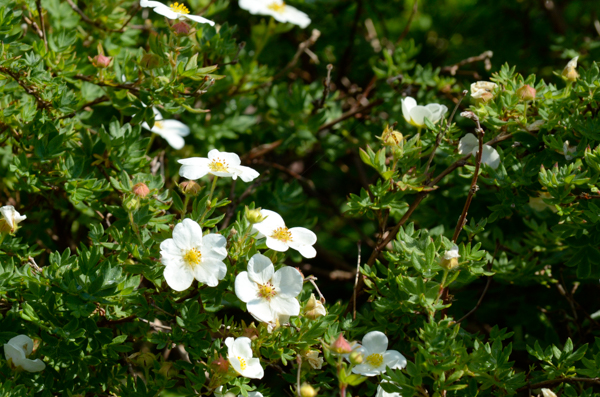 White-flowered bush cinquefoil Dasiphora (or Potentilla)
friedrichsenii
White-flowered bush cinquefoil Dasiphora (or Potentilla)
friedrichsenii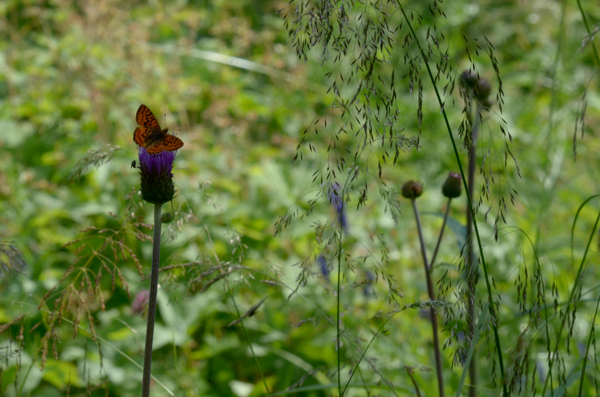 Appears
to be a Knapweed Fritillary butterfly.
Appears
to be a Knapweed Fritillary butterfly.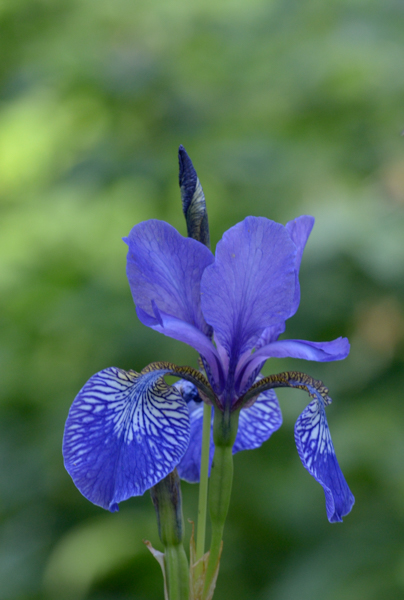
Bearded Iris, unknown cultivar.
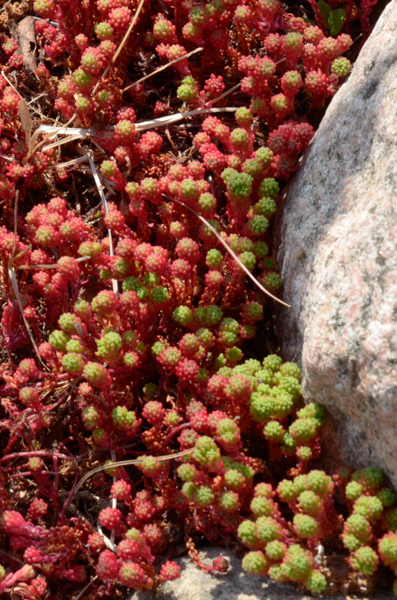 Another
succulent. We saw a lot of this on the arctic islands and into Norway.
Another
succulent. We saw a lot of this on the arctic islands and into Norway.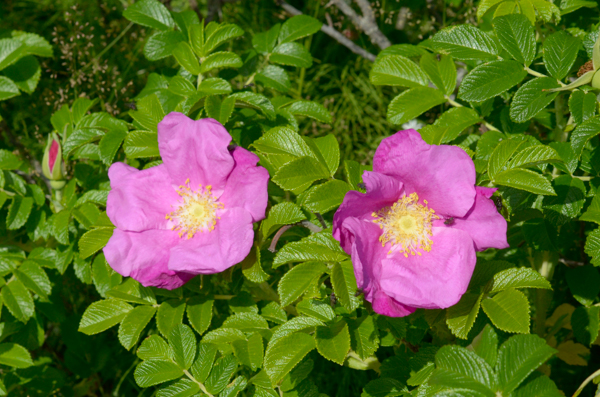 Rosa
Rugosa (ramanas rose) - Native to Asia
Rosa
Rugosa (ramanas rose) - Native to Asia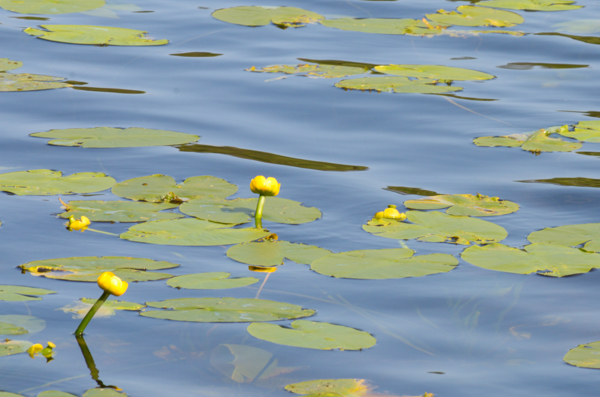 Water
lilies.
Water
lilies.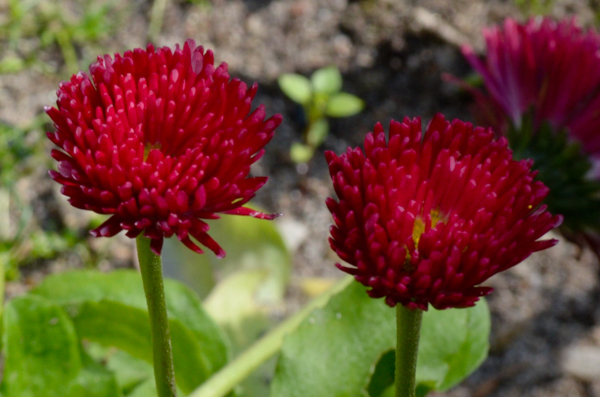 Unknown
red flower.
Unknown
red flower.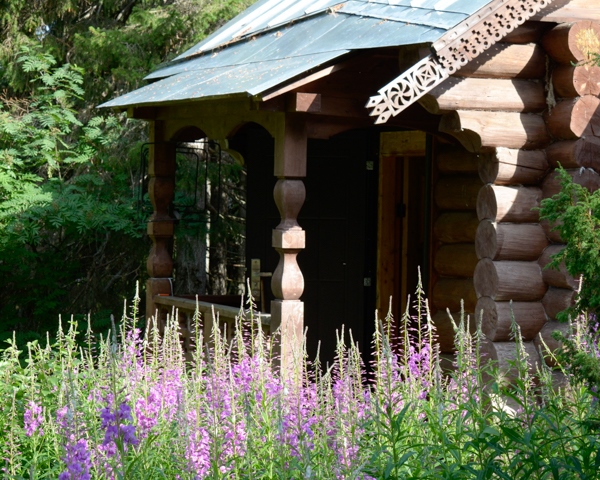 Gate-keeper's
Lodge
Gate-keeper's
Lodge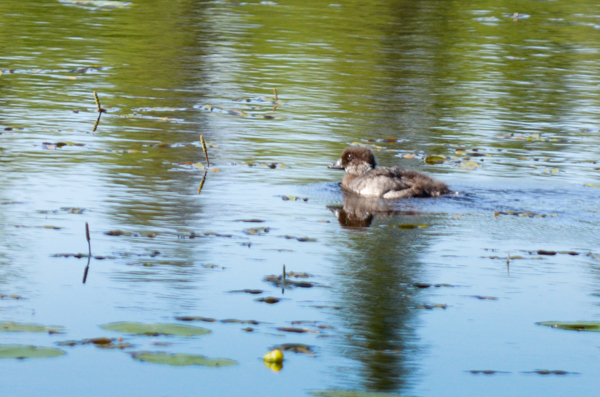
There were fauna as well as flora.
This may be an eider duck chick.
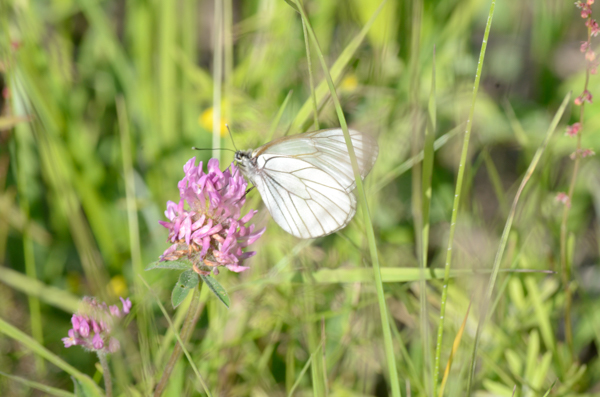 This
butterfly's common name is "Black-veined White" for obvious reasons.
It is Aporia crataegi.
This
butterfly's common name is "Black-veined White" for obvious reasons.
It is Aporia crataegi.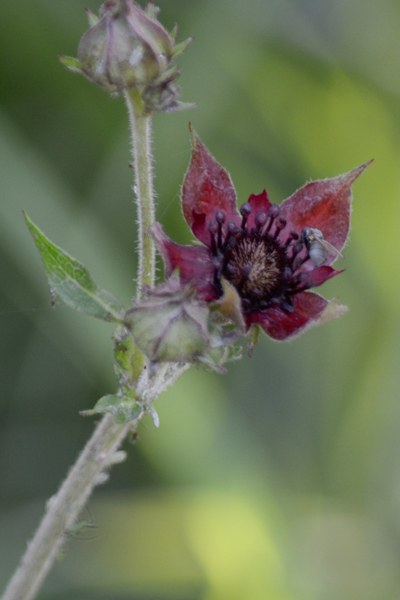 I believe this is Comarum palustre or marsh cinquefoil.
I believe this is Comarum palustre or marsh cinquefoil.
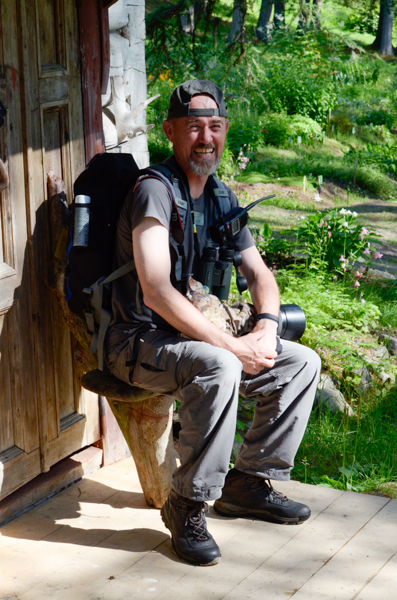 Our
naturalist was
Jim Wilson. If I had taken along a notebook or if I had caught up
with him on the ship, he could probably have identified a lot of these
flowers for me.
Our
naturalist was
Jim Wilson. If I had taken along a notebook or if I had caught up
with him on the ship, he could probably have identified a lot of these
flowers for me.Click your "back" button to return.